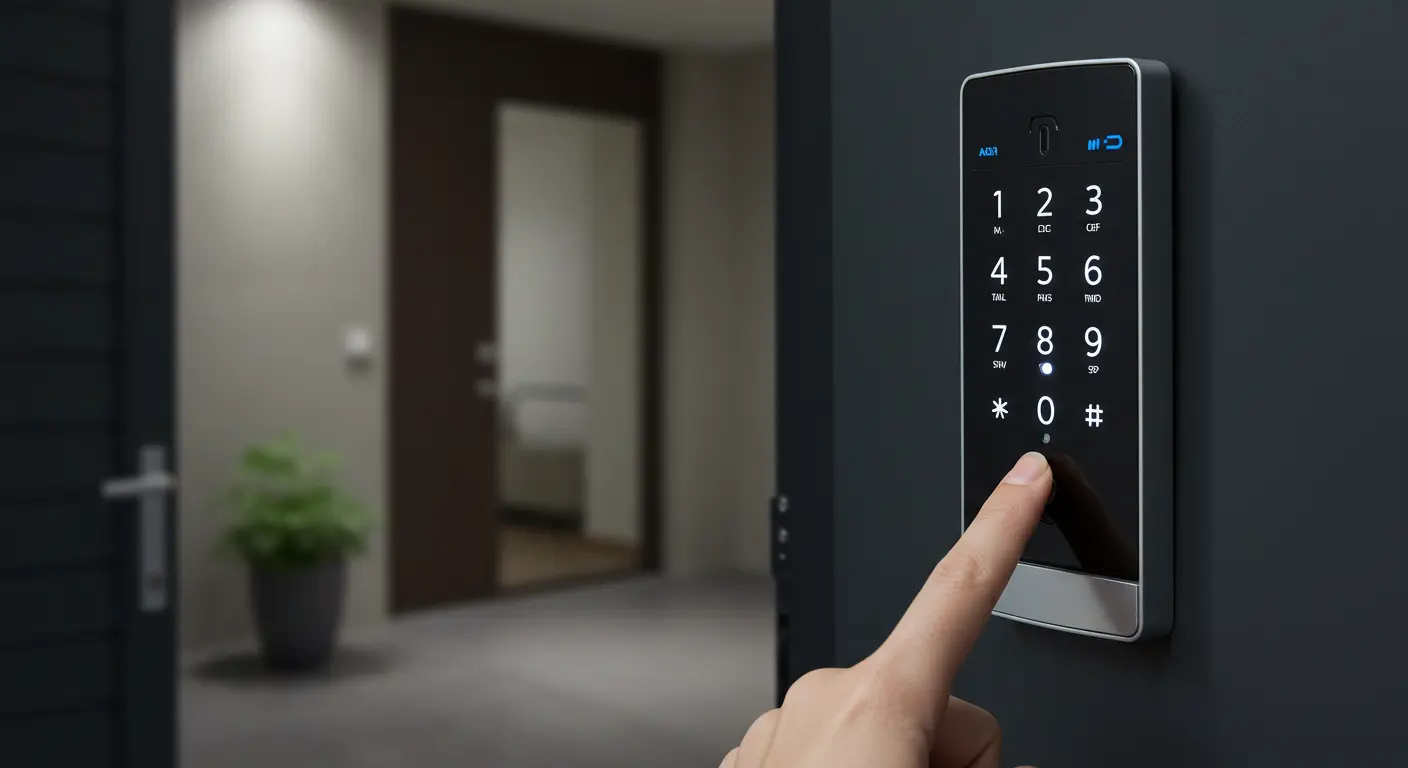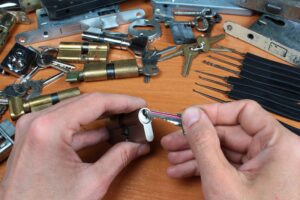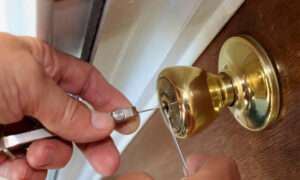Keyless entry means one less worry when you step out of the house. Keyless entry in Philadelphia makes accessing your home or business more flexible. It can be shared, changed, and even temporarily customized to fit your needs.
That means no more last-minute panic situations when leaving the house and no more anxiety wondering where you left the keys. It’s a small upgrade that significantly makes your day, even your life, much better.
Sometimes, you may have security concerns that someone has your lock’s code, like a creepy ex or a friend who stayed over for a week. Once you delete the code and reset your keyless entry in Philadelphia, the existing code no longer works, and you will feel peace of mind.
Here’s how you change it:
Steps to Reprogramming a Keyless Entry Lock
If it’s time to update your lock’s access code, the process is usually pretty straightforward, once you know where to start. Here’s a breakdown of the steps you’ll typically follow:
Find the Reset Button
Typically, a keyless entry system has a small reset button somewhere around the lock’s cover or inside it. You would simply need a screwdriver to unscrew the cover off and reach the button. However, this would depend on which model of keyless entry in Philadelphia you are using.
Hold the Reset Button
Once you press or hold the button, you will notice a light or hear a beep. This is an indication that the lock is now ready to accept new instructions.
Enter the Default Programming Code
Before you can reprogram the keyless entry in Philadelphia, you need to cross one additional security measure. The system usually requires you to add a default code that comes with the lock. This helps ensure that not just anyone can reprogram your system.
Set Your New Code
Now that you can reprogram the keyless entry, you will follow the specific sequence the lock’s manual tells you. The outline will help you add a new code. It might ask you to retype twice just to confirm you didn’t mistype or forget.
ALSO READ: Top 7 Best Locksmiths in Philadelphia, PA
Follow Any Requirements
Some locks have rules for code length or complexity. If the new code doesn’t meet those rules, the lock might reject it without much explanation — so it’s worth checking the manual first.
Test the New Code
After setting it up, close the door and try the new code several times to make sure everything is working smoothly. Better to find out now than when you’re locked out later.
Use the Mobile App (If Available)
If your lock is paired with an app, you might have the option to update codes through your phone instead of manually on the keypad. This can speed things up and is especially helpful if you manage multiple codes.
Always Check Your Manual
Every lock brand and even different models from the same brand can have slightly different reprogramming steps. If something seems off, double-check the manual for any extra steps specific to your device.
What If That Doesn’t Work?
Sometimes, even when you follow all the right steps, the keyless entry in Philadelphia just doesn’t respond the way you expect. It usually comes down to the specific brand and, more importantly, the model of your keypad.
Here’s what to check if that happens:
- Many keyless locks require a special reprogramming code to even enter programming mode. Without that code, the lock won’t allow you to add or delete access codes, no matter how long you hold the reset.
- If you know your lock’s model number, the easiest solution is to look up the official programming instructions online. Most manufacturers offer detailed guides or even quick how-to videos that walk you through the exact steps for your model.
- If you’re not sure what model you have, there’s a good chance it’s listed on a sticker inside the lock. Typically, you’ll find it on the interior part of the device, which you can access by removing the battery cover or unscrewing a small panel.
- Once you have the model number, you’ll have a much clearer path forward. From there, you can track down the correct method to reset and reprogram the lock properly, without guessing or risking damage to the system.
Troubleshooting Common Keyless Entry Issues
Sometimes, even when you follow all the right steps, the keyless entry in Philadelphia just doesn’t respond the way you expect. It usually comes down to the specific brand and, more importantly, the model of your keypad.
From there, you can track down the correct method to reset and reprogram the lock properly, without guessing or risking damage to the system.
Here’s a simple troubleshooting table you can follow:
Common Keyless Entry Lock Brands
Not all locks are programmed the same way. Here are some popular keyless entry lock brands you’re likely to find in Philadelphia homes and businesses:
-
Schlage – Durable smart locks with keypad and alarm features
-
Kwikset – Known for SmartKey re-key tech and simple code setup
-
Yale – Trusted brand with app-integrated smart locks
-
August – Mobile-first locks for modern homes and Airbnb use
-
Samsung – High-tech locks with digital touchpads and RFID access
-
Lockly – Offers fingerprint ID and rotating digital keypad security
Tip: Always refer to your specific lock’s model manual for accurate programming and reset instructions.
Can’t Seem to Figure it Out? Call the Experts
Knowing how to handle these small tasks can save you a lot of stress down the road. But sometimes a situation calls for more than a simple reset or battery change. If you ever find yourself dealing with a keyless entry in Philadelphia that won’t reprogram, a keypad that’s acting up, or you just want an expert set of hands to handle it, Kingston Locksmith has you covered.
We’re not just here to unlock doors. We’re here to make sure your home or business stays secure, smart, and stress-free. From reprogramming keyless systems to installing the latest models, we offer solutions that actually fit your life.
Need help today? Reach our locksmith in Philadelphia today!
Frequently Asked Questions (FAQs)
1) How do I know if my keyless entry lock can be reprogrammed?
Most modern keyless entry locks allow reprogramming, especially if they have a reset or programming button. Check your lock’s manual or model number to confirm.
2) What if I forgot my programming code?
If you’ve lost the default programming code, check the back panel of the lock or inside the battery compartment. If it’s not there, refer to the manufacturer’s website or contact their customer service.
3) How often should I change my keyless entry code?
It’s a good practice to change your code every 3–6 months, or immediately after someone who had access no longer needs it.
4) Can I program multiple codes for different users?
Yes! Many keyless locks allow you to program multiple user codes. Some models even let you set temporary or scheduled access codes.
5) Will changing the batteries delete my access codes?
Most keyless locks retain memory during battery changes. However, if your batteries die completely for an extended time, some locks may reset.
6) Is reprogramming the same as resetting the lock?
No, Reprogramming changes the user codes, while resetting typically restores the lock to factory settings. Always check what you need before starting.






